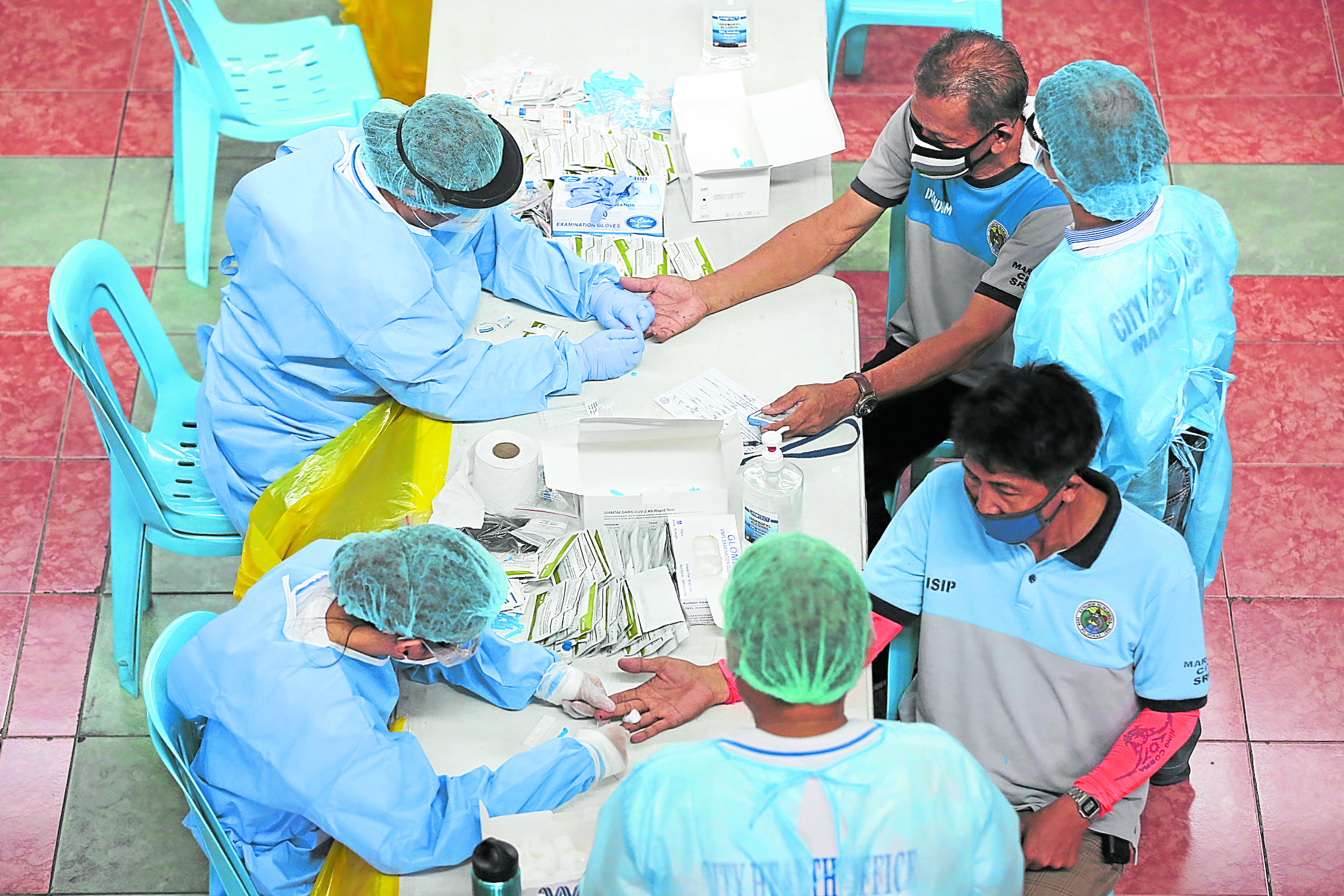Drilon to DOH: Come clean on COVID-19 reporting
MANILA, Philippines — Senate Minority Leader Franklin Drilon on Monday dared the Department of Health (DOH) to come clean on its sudden decision to change its system of reporting confirmed coronavirus infections, which differentiates “fresh” from “late” cases.
Drilon, whose exposé prompted the Philippine Health Insurance Corp. (PhilHealth) to cut its budget for its “overpriced” coronavirus testing package by half, said he suspected that the DOH had been “underreporting” the real number of people afflicted with COVID-19, the severe respiratory disease caused by the new coronavirus.
“We demand full transparency,” Drilon said in a text message. “Manipulating the data will not bring us anywhere.”
‘Hiding something’
He added: “With the DOH changing the manner of reporting the data after more than two months, we cannot help but suspect that it is hiding something. Honesty is the best policy here.”
The opposition leader pointed out that transparency had been critical in the fight against the coronavirus in other countries such as South Korea and China, where the pandemic began in an outbreak in Wuhan city late last year.
Article continues after this advertisementDrilon said the Korean authorities had been very open with their approach to stemming the transmission of the virus while the Chinese government had shown that “the lack of transparency could be fatal.”
Article continues after this advertisement“South Korea has show[n] transparency since day one,” Drilon said. “They dealt with the pandemic with complete transparency and because of this, coupled with the government’s decisiveness, they are able to contain the virus.”
The DOH, he said, should explain why it suddenly differentiated coronavirus cases and if it affected the government’s decision to ease quarantine restrictions in Metro Manila.
“If the DOH could not provide logical explanations for this, except for putting the blame on laboratories, then there is a reason to believe that it is underreporting [coronavirus] cases,” he said.
“That is not only counterproductive because hiding the real data could be fatal,” Drilon stressed.
The DOH last week explained that the spike in coronavirus cases in recent days did not mean the epidemic was getting worse, but that it was clearing a backlog of tests as it ramped up its testing capability. It warned of higher numbers coming with the return of more tests. Earlier, it announced its plan to hire 130,000 contact tracers, which would definitely affect its case reporting.
The program is estimated to cost P11.7 billion. The Department of Finance has committed to fund it.
Baguio system
Senate President Vicente Sotto III on Monday called on the DOH to drop the plan.
“The DOH does not need to hire new people to do contact tracing. It can coordinate with other government offices and tap displaced employees to carry out the task at no additional cost to the government,” Sotto said in a statement.
“It will be wiser and more practical to divert the P11.7 billion [to] the treatment of patients. We need funds to treat our sick countrymen,” he said.
While it is up to President Duterte to decide the matter, Sotto said, the DOH should be “more prudent” in using taxpayer money.
Instead of spending billions of pesos in public funds for the program, he said, the government should duplicate the contact tracing system used by Baguio Mayor Benjamin Magalong in suppressing the spread of the coronavirus in his city.
Magalong, a retired police general, employed computer-aided contact tracing using information gathered by police and medical investigators to locate suspected virus carriers.
Sotto said public funds would be wasted if people without formal training would be used as contact tracers.
“You cannot just deploy anyone to do the job. Contact tracing can only be effective if you use people who are trained in investigation like how they handled it in Baguio,” he said.
“If the DOH hires people who have no experience in investigation, then the program is practically useless. The people they will hire will just ask black and white questions and get answers that will not yield the needed information to help the government track down people who might have [contracted] the virus,” he added.
Sen. Leila de Lima, meanwhile, sought a Senate inquiry into the real status of the government’s testing program.
“There is need to identify the reasons as to why we are still way behind [in] testing, in spite of already months of intensified government efforts against COVID-19,” De Lima said in her inquiry resolution.
Officials earlier said the goal was to conduct 30,000 tests a day by May 31, and to increase this capacity to 50,000 tests a day in two months.
De Lima said the government had yet to reach its target. She pointed out that the lack of mass testing hampers efforts to contain the spread of the coronavirus.
Mass testing is the term generally used to refer to testing a wide range of people for the coronavirus. It does not mean testing every citizen of the Philippines.
According to the DOH, it has been doing 8,500 to 9,500 tests a day in recent days.
By end-June
Carlito Galvez Jr., chief of the National Task Force COVID-19, told a press briefing on Monday that the government would reach its target of 30,000 tests a day before the end of June.
“Right now we are having a little problem with the supply chain, [but] we are solving that now,” Galvez said.
Presidential spokesperson Harry Roque said funding would be allocated to ensure the achievement of the government’s goal of testing 1 to 2 percent of the population.
“It’s in the budget already. I will also clarify that in areas with high cases like Metro Manila, we seek to [test] up to 10 percent [of the population],” Roque said.
—WITH REPORTS FROM LEILA B. SALAVERRIA AND JULIE M. AURELIO

